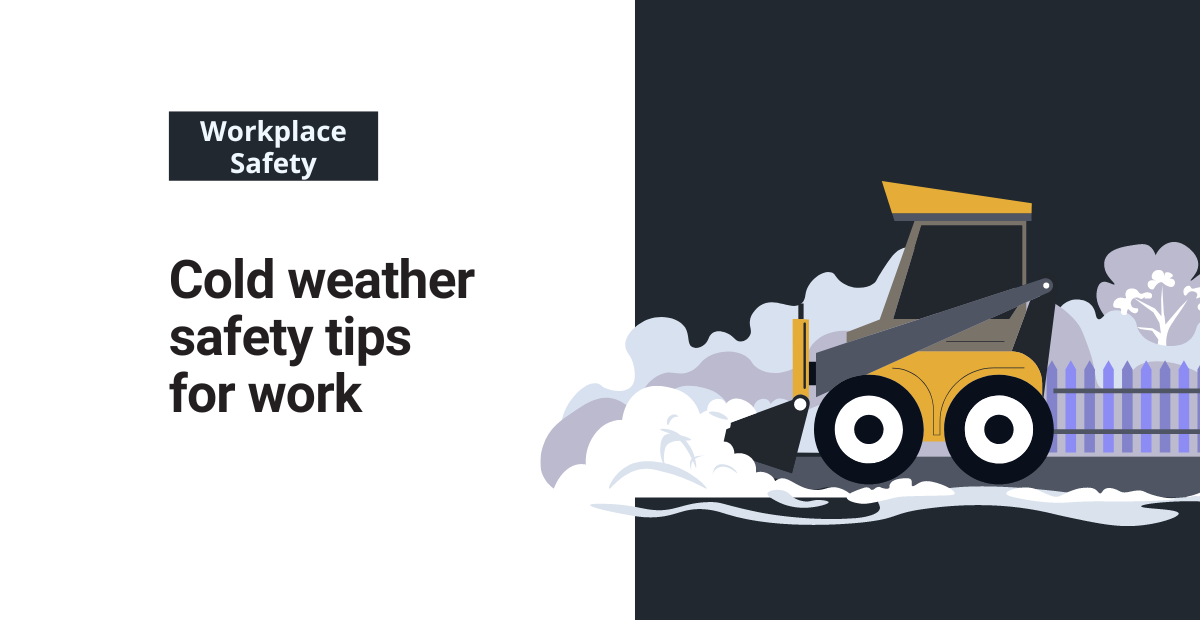One of the most common workplace health risks in the winter months is cold stress. This condition develops when workers are exposed to freezing temperatures or sharp wind chills.
It can cause major issues like hypothermia and frostbite and should, therefore, be treated with the utmost concern. Luckily, preventing these complications almost always comes down to preparation.
These health and safety cold weather tips will help you prepare for harsh conditions whether you’re an EHS leader or someone who works outside during the winter months.
Outdoor safety in cold weather
For anyone working in cold conditions, these are my top safety recommendations:
- Take extra clothing items with you in case you need to add a layer.
- Pack warm, hearty snacks and meals to keep your energy levels up and to regulate your body temperature.
- Wear a base layer of light clothing items to insulate body heat under your heavier clothing.
- Make sure that your pockets and hoods are secured with zippers, button closures, etc. to protect against cold drafts.
- When possible, opt for mittens over gloves, as they retain and circulate heat more effectively.
- Drink water throughout the day, incorporating hot beverages as well to keep yourself warm.
- Check your tire pressure and car battery the night before your shift. Then, wake up a few minutes early to properly defrost the windshield before heading out onto the road.
Hack these habits by putting together a go-bag for work with all the extra gear, snacks, and clothing you’ll need in case of an emergency.
Cold weather process safety tips
EHS leaders auditing their processes for cold weather safety should implement the following tips:
- Evaluate outdoor processes and see which steps can be moved inside when the weather is colder. If you make changes, update your workers’ training.
- Look for process steps that require workers to hold metal tools and consider how you can protect their hands from extremely cold materials.
- Fix any ill-fitting doors and other drafty areas before cold weather sets in.
- Review the insulation within your building and decide where you can make improvements.
- Keep a stockpile of salt on hand in case sidewalks become treacherous.
- Place additional anti-slip mats in high-traffic areas when rain, sleet, and snow accumulate.
- In case of an evacuation during the cold, keep outdoor bins stocked with emergency supplies like blankets, hand warmers, and ponchos.
- Have a store of extra clothing (shirts, socks, etc.) that you can lend to workers who are underdressed.
- Take an equipment inventory of your cold weather PPE (high-vis coats, ice cleats, etc.) and order items before the cold weather arrives.
Like any form of extreme weather, cold temperatures pose additional health and safety risks to workers. Every company with outdoor processes should perform risk assessments to determine which control measures are needed to keep their teams safe in harsh conditions.




